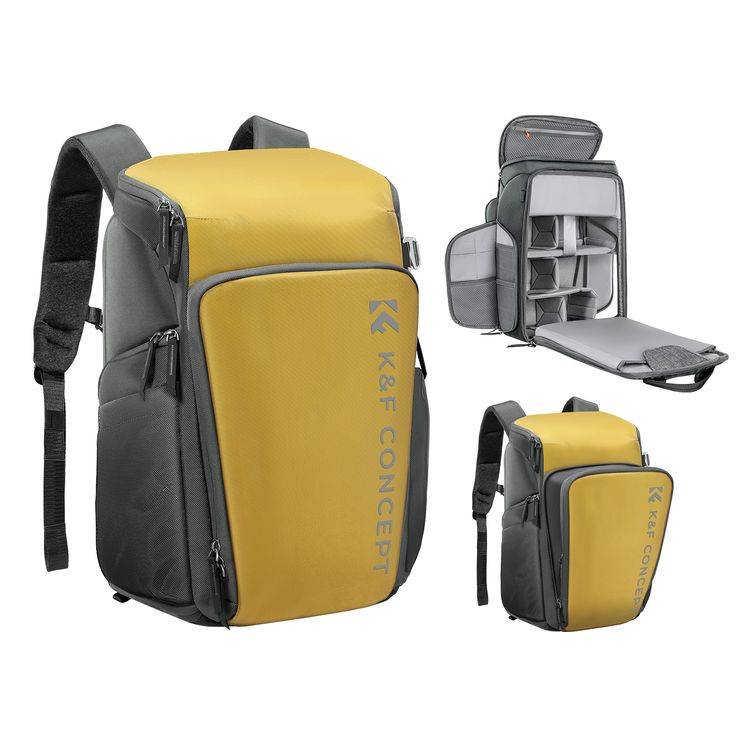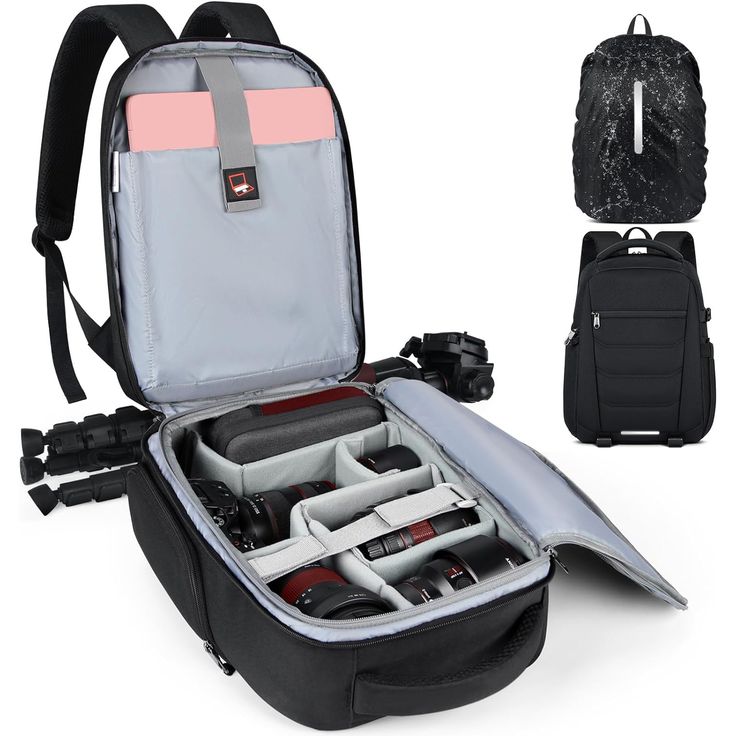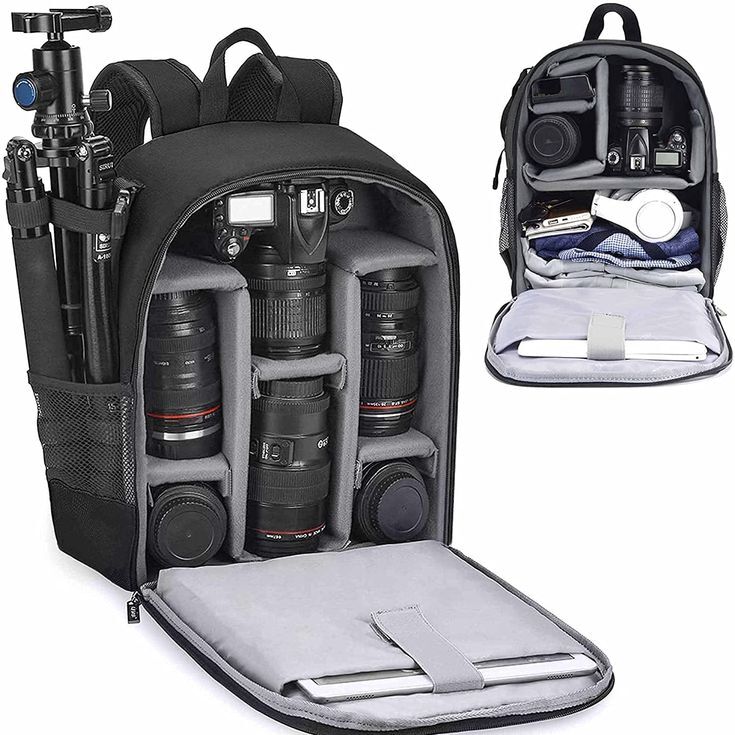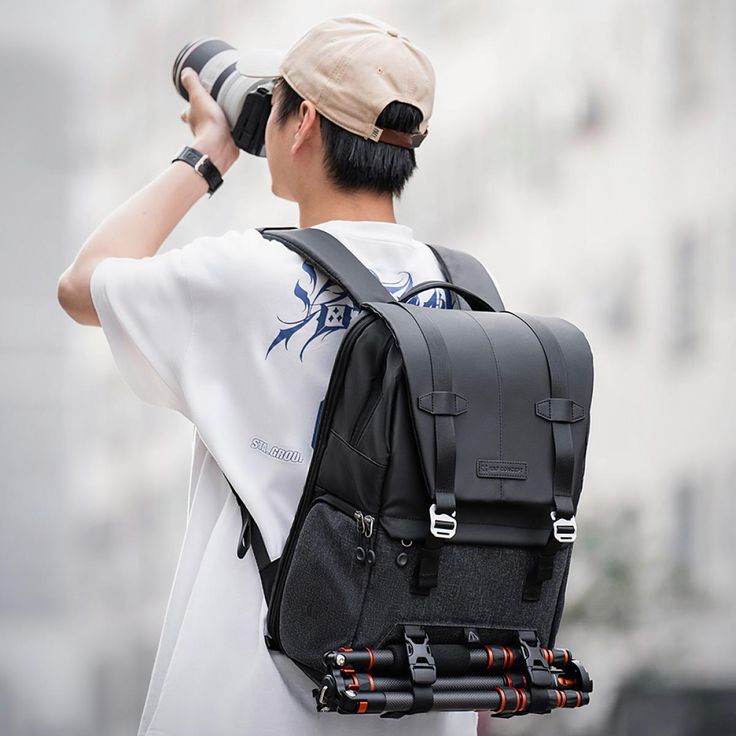Outdoor photography offers unique challenges, from changing weather conditions to diverse terrains. Choosing the right gear can make a significant difference in your experience and the quality of your work. One of the most crucial pieces of equipment is the camera backpack, which serves not only as a storage solution but also as a means of organization and protection for your valuable photography gear. In this article, we will explore the best options for outdoor photographers, highlighting key features, recommended brands, and practical considerations that can enhance your photographic adventures.

The Importance of a Quality Camera Backpack
When venturing into the great outdoors, packing your camera gear securely and efficiently becomes vital. A quality camera backpack protects your equipment from elements like rain, dust, and accidental drops while also facilitating ease of movement. Unlike traditional camera bags, which can be bulky and cumbersome, a well-designed camera backpack distributes weight evenly across your back, allowing you to carry it comfortably for long distances.
A camera backpack also supports specific organizational needs. Different photography sessions require different gear, and having a dedicated space for each item saves valuable time when setting up. Additionally, many backpacks feature customizable compartments, which allow you to tailor the interior to fit your unique selection of lenses, bodies, and accessories.
Moreover, outdoor photography often exposes you to rugged environments where durability is paramount. Investing in a sturdy camera backpack properly equipped to handle different weather conditions enhances your overall experience, ensuring that you can focus on capturing stunning images rather than worrying about your gear.
Key Features to Consider in a Photography Backpack
As you dive into the market for a camera backpack, keep in mind a few essential features that can greatly enhance usability and performance. Understanding these elements will help you identify the best options tailored to your specific outdoor photography needs.
1. Weather Resistance
Outdoor photographers often work in unpredictable conditions, so look for backpacks constructed from weather-resistant materials. Fabrics with water resistance prevent moisture from reaching your gear. Many high-quality backpacks include rain covers that you can deploy quickly during sudden downpours. Keeping your camera and lenses dry ensures that you focus on your photography rather than worrying about potential damage.
2. Comfort and Fit
A comfortable fit is essential for long treks in the wilderness. When considering a camera backpack, pay attention to the design of the straps and back panel. Padded shoulder straps and back panels support your comfort during extended use. Additionally, adjustability is crucial; a good backpack should feature adjustable straps and a sternum or waist belt, which help distribute the weight evenly. This not only enhances comfort but also stabilizes the pack during movement, minimizing the risk of strain or injury while navigating rough terrain.
3. Capacity and Organization
Outdoor photographers often carry various gear, including multiple lenses, batteries, and tripods. Ensure that the backpack you choose has enough capacity to accommodate your photography equipment while also leaving space for personal items. Adjustable dividers allow you to create customized compartments, which helps keep your gear organized and easily accessible.
Also, consider pockets designed for quick-access items like water bottles, memory cards, or snacks. Internal zippered compartments can safely store smaller items like cables and filters, while exterior pockets provide quick access without digging through your pack.

Recommended Brands for Outdoor Photography Backpack
Several brands stand out in the photography community for producing high-quality camera backpacks designed specifically for outdoor photographers. Here are a few top recommendations:
1. Lowepro
Lowepro has carved a niche for itself in the world of photography gear, and its camera backpacks reflect innovation and durability. Models like the Lowepro ProTactic series offer excellent weather protection and customizable interiors. They incorporate adjustable dividers along with easy access to gear through side openings. Lowepro’s backpacks also feature various attachment points for accessories, making them a favorite among outdoor photographers.
2. Peak Design
Known for their sleek aesthetics and functional designs, Peak Design backpacks combine style and practicality. The Everyday Backpack, for instance, functions brilliantly both as a camera bag and an everyday pack. Its innovative FlexFold dividers allow photographers to configure their equipment easily while maintaining an organized interior. The weatherproof zippers and durable materials provide confidence in various outdoor conditions.
3. MindShift Gear
MindShift Gear’s rotation of offerings, like the MindShift BackLight series, emphasizes accessibility and ergonomics. These backpacks allow photographers to access their gear without taking the entire pack off, facilitating quick changes during a shoot. Built with rugged materials suitable for outdoor environments, these backpacks cater to serious adventurers and skilled photographers alike.
Managing Gear Weight: Best Practices for Packing
Packing your camera backpack properly is critical for managing weight and ensuring easy access to gear. Here are some strategies to maximize efficiency while maintaining comfort:
1. Prioritize Essentials
While it can be tempting to bring every piece of equipment, selectively packing your essentials makes a significant difference. Consider the specific shoot requirements and carry only the lenses and accessories needed for the task. This minimizes weight and provides space for unexpected items you may find while exploring your surroundings, such as additional protective gear or snacks.
2. Balanced Weight Distribution
When packing, aim to distribute weight evenly throughout the backpack. Place heavier items close to your back and low in the bag. This positioning maintains stability and reduces strain on your shoulders. Additionally, use side pockets for lighter items like water bottles to keep your center of gravity balanced.
3. Create a Packing List
Developing a packing list based on your planned excursion can streamline the packing process. Include essentials like camera bodies, lenses, batteries, chargers, and any specific accessories based on your shooting style (like filters or tripods). Keeping a checklist helps avoid leaving behind critical gear, ensuring you’re well-prepared for your outdoor adventure.

Optimizing for Travel: Portability Matters
Outdoor photographers often hike to their shooting locations, highlighting the importance of portability in a camera backpack. Here’s how to ensure your backpack remains travel-friendly:
1. Lightweight Design
Choose a backpack that balances durability with lightweight construction. Avoid heavy materials that contribute to fatigue during long hikes. Instead, look for high-quality, lightweight fabrics designed with weather resistance in mind.
2. Compact Size
Consider the size of the camera backpack carefully. A compact design enhances maneuverability in rugged terrain while also fitting easily into vehicles or during travel. Many models allow for a streamlined profile, ensuring they meet carry-on requirements for air travel or can be worn comfortably during hiking.
3. Versatile Carrying Options
Some backpacks offer additional carrying options, such as a detachable camera case or shoulder strap for quick excursions. Evaluate your shooting style and preferences to determine the best approach for each trip. A backpack with multiple carrying options adds convenience and flexibility for various adventures.
Choosing the Right Accessories for Your Backpack
Once you select the ideal camera backpack, consider additional accessories that can enhance its functionality and extend your outdoor photography experience.
1. Rain Covers
Although many backpacks come with built-in weather resistance, investing in a separate rain cover provides extra protection during prolonged storms. Ensure the rain cover fits snugly around the backpack when deployed, keeping your gear dry and safe from moisture.
2. Lens Cases and Pouches
Include lens cases or pouches in your packing strategy for additional layer protection. Lightweight pouches designed for individual lenses not only minimize bulk but also prevent damage from collisions. Packing your lenses separately helps maintain optimal performance and focuses on preserving each piece of equipment.
3. Camera Straps
Consider upgrading your camera strap for additional comfort and support while shooting outdoors. A well-padded strap distributes weight evenly across your shoulder and provides quick access to your camera when held in a ready position. An ergonomic design will help reduce fatigue, particularly during extended shoots.

Maintaining Your Camera Backpack for Longevity
Maintaining your camera backpack ensures its longevity and continued performance over time. Follow these tips to keep your gear in optimal condition:
1. Regular Cleaning
Regularly clean your backpack to remove dust and dirt collected during outdoor trips. Many backpacks feature removable components, making it easy to hand wash or spot clean specific areas. Use mild soaps and avoid harsh chemicals that could degrade materials.
2. Store Properly
When not in use, store your backpack in a cool, dry place to avoid moisture accumulation and mold growth. Allow the bag to air out before placing it in storage. Most importantly, pack any unused accessories within the backpack for easy access later, minimizing clutter and maximizing organization.
3. Inspect for Damage
Before each trip, inspect your backpack for any signs of wear or damage. Check the zippers, seams, straps, and padding. Address any minor issues before they escalate, ensuring your backpack remains protective and functional throughout your outdoor adventures.

Conclusion: Find Your Perfect Photography Backpack Today
Selecting the ideal camera backpack for outdoor photography encompasses various factors, from features to brand reliability. By prioritizing elements such as weather resistance, comfort, organization, and connectivity, you can make informed decisions that enhance your photography experience.
Take the time to explore different brands and models that suit your specific needs, ensuring that your chosen backpack aligns with your lifestyle and shooting style. As you prepare for adventures into the great outdoors, remember that a well-chosen camera backpack not only protects your gear but also inspires creativity and passion in your photography.
Invest in a quality camera backpack today, and embrace the freedom it provides as you capture breathtaking moments in nature. The right backpack equips you for every journey, allowing you to focus on what truly matters: your passion for photography and the stories you capture along the way.